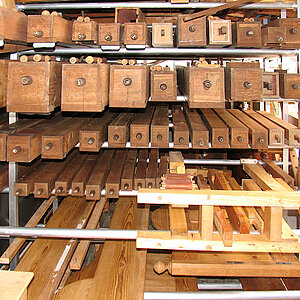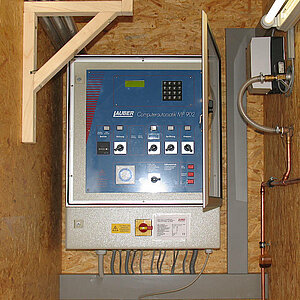
Proven method
Temperature-controlled hot air treatment is a further development of the principle underlying the popular hot air treatment which has been applied successfully for many years. Today, temperature-controlled hot air treatment is a proven method of treating precious objects from museums or churches.

Pest control: ecofriendly, gentle, cost-efficient
The temperature-controlled hot air procedure is used to destroy insect pests in organ parts, wooden objects or furniture by gradually heating them to 55°C in a controlled process. At approximately 48°C, the molecular structure of animal proteins changes, destroying pests such as woodworm, mites or wood ticks at all stages of their development.
Precise analyses of the behaviour of organ parts and wooden objects during the heating and cooling phase have paved the way for the development and market maturity of the technical procedure. The main problem in implementing this method is the behaviour of organic objects during the treatment process. Improper application would result in cracks or warps in the material.

State-of-the-art technology
In efforts to solve the problem, the potential of state-of-the-art measurement and control technology and highly sophisticated computer programs was used to control and monitor the entire process.
Extensive subsequent testing confirmed the market maturity of the procedure. Due to the accurate and uniform control of air temperature and humidity and continuous air circulation, the objects treated do not incur any damage.
Temperature-controlled hot air treatment is an ecologically safe procedure which has been developed for the market and can now be applied to control insect pests in precious cultural artefacts.


